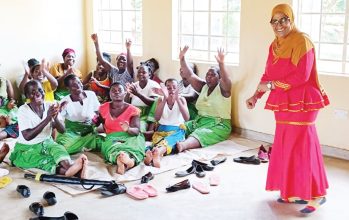Government owes Cham K3.1bn service arrears
Christian Health Association of Malawi (Cham) facilities are struggling to provide services due to K3.1 billion arrears that Malawi Government owes them in service level agreement (SLA) arrears.
Cham executive director Happy Makala, in a memo dated July 10 2023 and addressed to health coordinators and hospital directors in the organisation’s affiliates, said the arrears are for fiscal year 2022/23 and the current one.
Reads part of the memo: “The secretariat noted that batches 17 to 24 in fiscal year2022/23 and all three batches in fiscal year 2023/24 were not paid and that some of the invoices were submitted as far as November 2022.
“The total in arrears is about K2.3 billion for fiscal year 2022/23 and K817.3million for fiscal year 2023/24. As a result of the delays in the SLA payments, service delivery has been affected in almost all the Cham facilities that are under SLA.”
Initially, the SLA medical services programme was entered into between the government and Cham in a bid to achieve the universal health coverage (UHC).

Under the programme, people, especially in rural areas and where there are no government health facilities, are allowed access to health facilities run by Cham to achieve the UHC in the long term.
According to the memo, Cham officials and Secretary for Health Dr Samson Mndolo met on Monday to discuss the matter.
The memo states that Mndolo assured the Cham delegation that efforts are underway to ensure that the SLA payments are done.
In the interim, the memo quotes Mndolo as having indicated that a series of meetings have taken place with the Health Sector Joint Fund (HSJF) to consider a resumption of payments following a freeze due to some technicalities.
Meanwhile, another meeting is scheduled for next week with the HSJF to discuss the matter further.
Further reads the memo: “The ministry has also contacted Treasury as well as the Office of the President and Cabinet to increase government contribution to the SLA pool.
“The ministry is also working on dividing /grouping the facilities to ensure that some are supported through the government funding stream while others by the donors.”
Makala could not be reached on numerous occasions while Mndolo confirmed the matter, but asked for a questionnaire as he was reportedly attending an event.
But Malawi Health Equity Network executive director George Jobe in a separate interview yesterday said the situation needs immediate attention.
He said: “The delayed payments can negatively affect the Cham facilities and that it can also affect maternal and child neonatal health issues.”
“It is regrettable that the HSJF suspended the payments. But, the immediate action that is required is that we expect the Ministry of Health to make progress with talks with the HSJF.”
Jobe said there is need for resources to be quickly identified to avert a potential crisis within the health sector.
On the other hand, Health and Rights Education Programme executive director Maziko Matemba faulted government for not being financially realistic towards the SLA payments to Cham.
He said the government needs to have a realistic budget and financial guarantee inpaying Cham instead of working on assumptions.
Said Matemba: “The problem is that when the funds cannot be found, the wage bill for the SLA keeps accumulating. But then the government should also increase funding allocation towards Cham to ensure that the UHC is achieved.”
Cham operates of over 184 health facilities as well as 11 training hospitals nationwide.
Cham affiliated health facilities deliver 37 percent of health services in Malawi and serve a catchment area of 30 percent of the country’s population, according to both Cham and Ministry of Health.
While 85 percent of Malawi’s population is in the rural areas, Cham provides up to 75 percent of health services in those particular areas. This means it would be easy, through the SLA, for the Malawi Government to achieve the UHC with Cham facilities closer to the people.
Cham facilities also provide 22 percent of Malawi’s antenatal care and deliver 23percent of Malawi’s babies.





